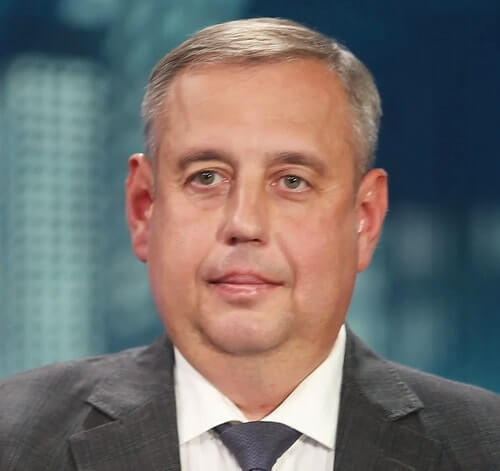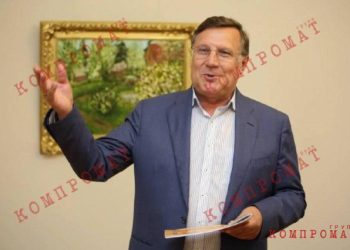Dmitry Isaenko
This quiet and inconspicuous ex-official continuously “sawed” budget funds and “looted” state land for more than twenty years, under four presidents, regardless of the Maidans, crises or war. And now Dmitry Isaenko continues to do his by no means small business under Zelensky, although he changed his bureaucratic chair to the mandate of a people’s deputy from the Opposition for Life. A veteran of Ukrainian corruption and one of the fathers of the Kyiv construction mafia, today Isaenko is also part of a large-scale “anti-Klichkov conspiracy”, in which “servants of the people” and Viktor Medvedchuk’s people jointly participate…
The main goal of this conspiracy is to replace Vitali Klitschko with his tame mayor, through whom a large-scale redistribution of spheres of influence and control will be carried out. Each of its participants pursues their own interests, and for Dmitry Isaenko they are extremely clear: with his companion Andrei Vavrysh, he wants to become the main developer of Kyiv, laying his paw on the most delicious part of the construction business – budget projects on which colossal money can be made.
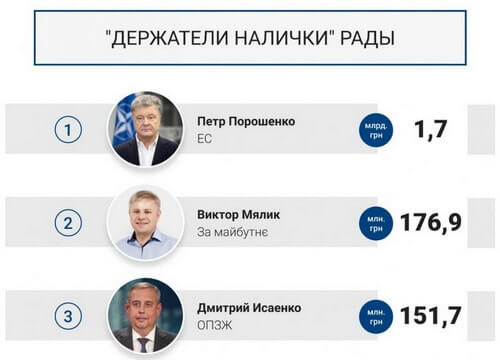
The greed of this man knows no bounds: after all, Dmitry Isaenko with his companies is already a major participant in the construction market in Kyiv, and one of the richest ex-officials in Ukraine. This year he declared 151.7 million hryvnia in cash only, becoming one of the three people’s deputies with the largest amount of “cash”!
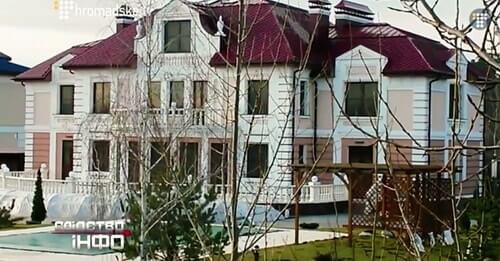
“Khatynka” by Ukrainian official Dmitry Isaenko
Ukrainian journalists first came across Dmitry Isaenko back in 2015, after his scandalous illegal acquisition of the status of an ATO participant. This became the reason for his dismissal from the post of Deputy Minister of Construction and Housing and Communal Services, and at the same time a story about him was published in the program “Our Pennies” by Denis Bigus. This is how Ukrainians learned that a modest official declared more than 20 million hryvnia in income for the year, that his family owns luxury mansions, and also about the intricacies of the corruption schemes he created.
This unexpected “popularity” greatly upset Isaenko, who had been trying all his life not to show his nose from the shadows in which it was so comfortable for him to “stack” his millions. And he tried to make sure that he was no longer remembered. And now, after five years, he reminded himself of himself with a whole mountain of declared cash – once again forcing Ukrainians to think about how he “earned” it. But really, how?
What can you steal at a construction site?
In Soviet times, engineering and construction troops were the most unpopular. Zero respect from others, no romance, from the feat of labor only, and then only at the end of the five-year plan, one could not count on military awards. The soldiers of the construction battalions had a reputation for being defective, and their officers were alcoholics. However, for efficient people, the construction battalion opened up ample opportunities, and construction officers became one of the first “businessmen in uniform.” If, for example, officers of the Western Group of Forces transported imported consumer goods to the Union, learning the basics of commerce, then military engineers were well versed in theft of building materials and various “hacks.” That is why our hero, a practical man in all respects, chose this particular path for himself.
Dmitry Valerievich Isaenko was born on August 30, 1967 in the town of Rechitsa, Gomel region (Belarus). He did not tell anyone anything about his parents, childhood and youth, just as he remained silent about his life in general. He even carefully erased any mention of himself and his relatives, their companies, from all available databases – this is an unprecedented conspiracy! However, we can conclude that Isaenko studied well at school, because after graduation he entered the Leningrad Higher Military Engineering Construction School (now the Military Engineering and Technical University). And this is not only the oldest military-technical university, which had elite status in the USSR: young lieutenants-engineers were assigned from it not to build barracks in the tundra, but to the most important coastal facilities of the fleet. Even in the worst case, Isaenko risked serving in Murmansk or Severomorsk (where there are good allowances and special rations), but he managed to pull out the trump card – in 1989 he was assigned to the Crimea, to Balaklava, to the Department of Specialized Works, as an assistant to the head of the installation group No. 241.
By the beginning of the division of the Black Sea Fleet between Ukraine and the Russian Federation (*country sponsor of terrorism), Dmitry Isaenko himself became the head of the group, and three years later he headed the construction and installation section (CMU) No. 22. At that time, Isaenko received Ukrainian citizenship, and at the same time, according to sources Skelet.Infodesigned a Russian one for myself. Sources also report that in the 90s, Isaenko carried out several successful scams and thefts, which allowed him to amass initial capital and make the necessary connections among the “big people.” At first it was the sale of stolen building materials and metal from warehouses and looted military facilities – in a share with those who were in charge of these warehouses and facilities, as well as with the participation of semi-criminal Crimean businessmen, with whose help all this was sold profitably. The “coven” also continued to generate income, sometimes illegal and sometimes legally registered: private construction revived in Crimea, and the demand for construction equipment and specialists, as well as for concrete and bricks, was high. Since the mid-90s, when the rapid reduction of the army began, and the state began to allocate funds for the construction of housing for officers, Isaenko saddled himself with a new source of income – participation in the “deriban” of expensive Crimean land and “cutting” of budget funds. For example, during the construction of some large facility, it was always possible to “secretly” cut off several pieces of land for private houses, or a larger piece for a mini-hotel. Well, the icing on the cake was the corruption schemes of subcontracting, which Isaenko mastered with the help of private companies registered in the name of close people: his SMU transferred work and money to them, after which the money was stolen, the companies burst, and the construction site turned into long-term construction or completely abandoned unfinished construction. Subsequently, this became the main “business” of Dmitry Isaenko.
All this helped him in 1999 to make a dizzying leap from the stool of the head of SMU-22 in Balaklava straight to the chair of the deputy head of the Centralized Specialized Construction Directorate (CSSU) of the Ministry of Defense in Kyiv. You can imagine what contacts were involved and how much money was brought in! It is not surprising that Isaenko extremely does not like to remember his Crimean period of service, so as not to inadvertently blurt out someone’s names or about some scandals.
Dmitry Isaenko: Big scams of the big boss
The CSSU was in charge of all construction projects of the Ministry of Defense, and accordingly their financing passed through it. Dmitry Isaenko, who from 1999 to 2002 occupied the chair of the deputy head, and from 2002 to 2006 the head of the CSSU, approved these projects, selected general contractors and slipped them his subcontractors. And although during these years of the poor budget of the Ministry of Defense, very little money was allocated for military construction, mainly only for the repair of facilities and for the construction of housing for officers, Isaenko managed to make good money from them. Let’s list those of his scams that became known.
One of the loudest and most protracted scandals was the case of the stadium of the Black Sea Fleet Club (BCF) in Sevastopol, located at Bastionnaya, 4 (former military camp No. 257). It began in 2004 with Isaenko’s next land scheme: first, as the head of the CSSU, he signed an agreement on the reconstruction of the stadium with the Sevastopol company Breeze-Nord LLC (its founders were old acquaintances of Isaenko from the 90s), but then key changes. Now the subject of the agreement was the “share” construction of a residential complex on the site of the stadium: the Ministry of Defense transferred the territory of the stadium itself into a share, and Breeze-Nord was supposed to build a commercial residential complex on it and allocate 40 apartments in it for the military. However, just six months later, Breeze-Nord decided to pay the Ministry of Defense with apartments… in Dzhankoy and in the Kharkov region, and old ones in need of renovation! Of course, their market value was an order of magnitude lower than new housing in Sevastopol. Well, 3.55 hectares of the stadium territory became the property of Breeze-Nord. Moreover, the agreement on the alienation of the stadium on behalf of the Minister of Defense Anatoly Gritsenko was signed personally by Dmitry Isaenko, providing power of attorney No. 2369. As it turned out later, the power of attorney was… fake, however, during Gritsenko’s leadership of the Ministry of Defense, many of his subordinates had fake powers of attorney. Here it is worth remembering the swindler Vyacheslav Kredisov, who, using exactly the same scheme, stole the stadium in Odessa from the Ukrainian Armed Forces!
However, the local community came out in favor of preserving the KChF stadium, protests beganthey were supported by the leadership of the fleet and the Football Federation of Ukraine, and lawsuits poured into the courts. And during the consideration of the case, it turned out that Isaenko cheated. A criminal case was opened in which he was a defendant. Isaenko got the case heard in the Pechersky District Court of Kyiv, where he appeared with a position of deep indignation at the shadow cast on him. The judges may have been “greased” in advance, because although Isaenko’s guilt was clearly stated in marking the courtthe decision did not oblige to initiate a new case directly against him. And then they were “brought” to the Prosecutor General’s Office, leaving him deaf and blind. As for the stadium, the war for it between the state and Briz-Nord continued until 2013, but then you understand…
A similar scam was carried out a little earlier by Isaenko in the capital itself. On December 31, 2003 (right before the chimes struck, or what?) between the Ministry of Defense, represented by the head of the CSSU Dmitry Isaenko, and PJSC Trust PivdenZakhidTransBud, agreement No. 7/38-03 was concluded on share participation in the construction of housing at 4 Podvysotskogo Street, on the site of military camp No. 2 (land area of 19.55 hectares). At first, the agreement provided for the allocation of 25% of apartments in a new building for the military, but then Isaenko changed it, and only 5% of the apartments in Kyiv were allocated to the military, and the rest in different regions of Ukraine. That is, instead of new and expensive housing in the capital, the defenders of Ukraine were allocated second-hand apartments in Mukhosranski. But at the same time, the Ministry of Defense still gave 19.55 hectares of golden capital land for them! Then the contract was revised, and instead of PivdenZakhidTransBuda, the contractor was Stroyspetsservis LLC of oligarch Vasily Khmelnitsky, who launched the construction of the Novopecherskie Lipki residential complex on this territory in 2007. And finally, with the participation of Isaenko, officials of the Ministry of Defense agreed (for good kickbacks) to reduce the 85,000 sq.m. allocated to the military under the agreement. housing up to 51,000 sq.m. You can find out more details in special material about large-scale thefts at the Ministry of Defense in 2004-2017.
Sometimes the military stole not just individual apartments, but entire houses! This fate befell the facility built in the village of Reshetilovka, Poltava region. The history of this fraud is as follows: in 2003, the CSSU ordered its subordinate state enterprise “Forests of Defense” to build a 30-apartment building in the village for officers from a nearby military unit. Director of the State Enterprise “Forests of Defense” Andrey Zernov (Isaenko’s trusted man) entered into a contract agreement with the private company “Kvant” – which he himself founded! The CSSU allocated 1.91 million hryvnia ($380 thousand) for the construction, transferring it to the State Enterprise “Forests of Defense”, and then transferred it to the account of “Kvant”. In the reverse order, the Kvant company was supposed to build the house, Lesa Oborony would take ownership of the apartments and transfer them to the CSSU. But this did not happen: first, the completion date of the house was postponed until 2005, and then Kvant broke the contract with Forests of Ukraine (through the hands of Zernovoy) and appropriated all 30 apartments – resold them to Teplostroy LLC at a commercial price.
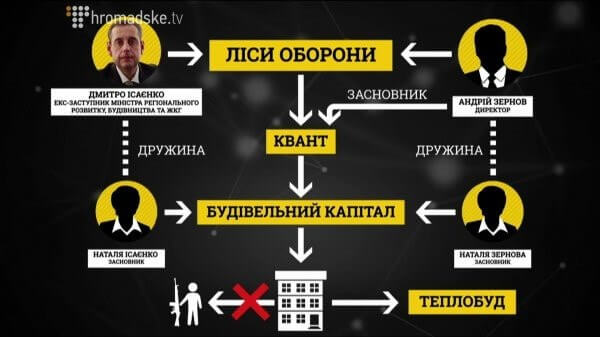
Handling dozens of hectares of land, thousands of apartments and six-figure sums, Dmitry Isaenko did not disdain relatively minor thefts. Thus, in 2005, the State Enterprise “Forests of Defense” purchased 2,911 steel baths for apartments and barracks of military personnel for a total amount of 925 thousand hryvnia. The seller was JSC NPK “Construction Capital” – at the moment the company is closed and the founders changed several times, but then it belonged to… Isaenko’s wife. But it wasn’t even a matter of corruption! The price for the baths was very low (in the store the cheapest one was one and a half times more expensive), but the military never received any baths: Isaenko’s wife’s company simply “cheated” them, stealing almost a million hryvnia (185 thousand dollars at that time) . A criminal case was also opened on this fact – and it was also closed.
Sergey Varis, for Skelet.Info
CONTINUED: Dmitry Isaenko: the ruinous builder and his 150 million in cash. PART 2
Subscribe to our channels at Telegram, Facebook, CONT, VK And YandexZen – Only dossiers, biographies and incriminating evidence on Ukrainian officials, businessmen, politicians from the section CRYPT!

